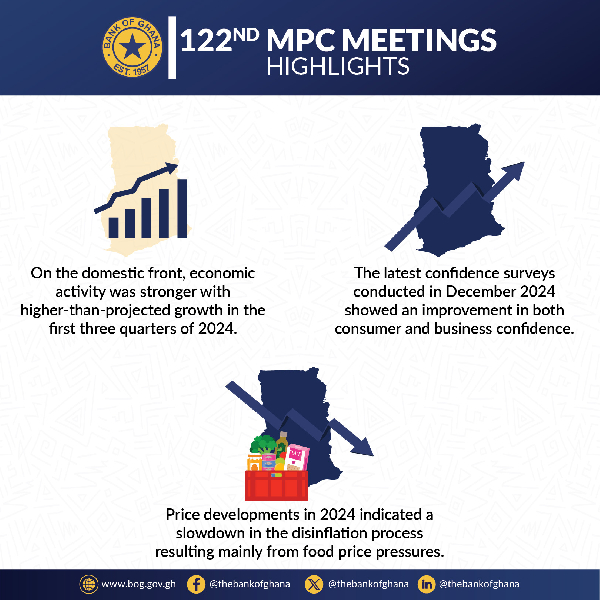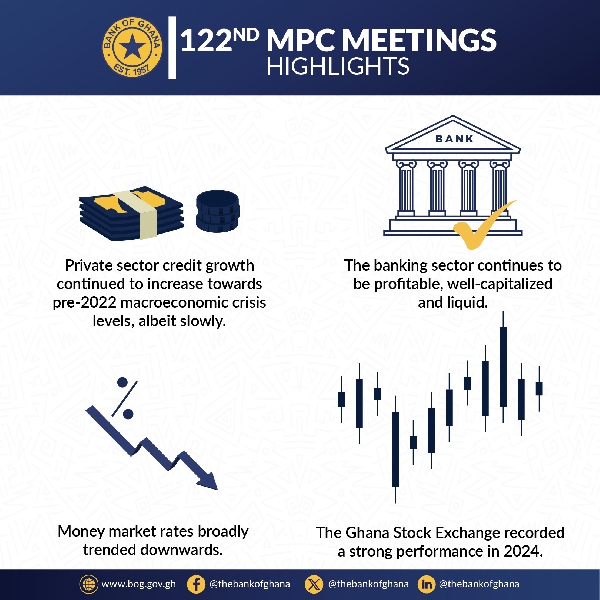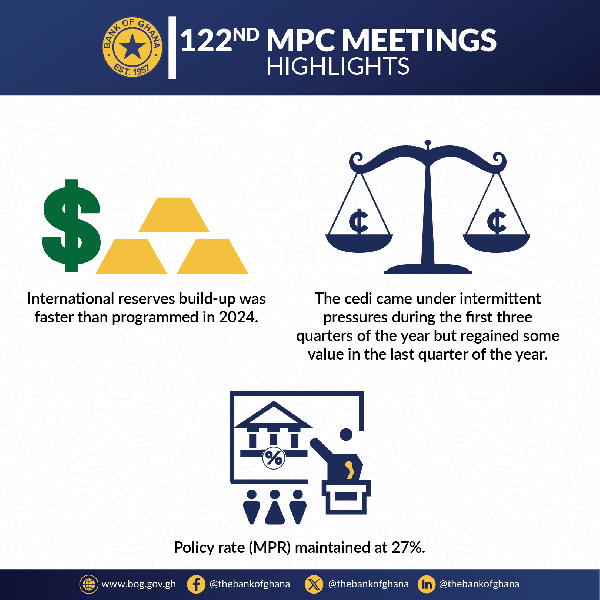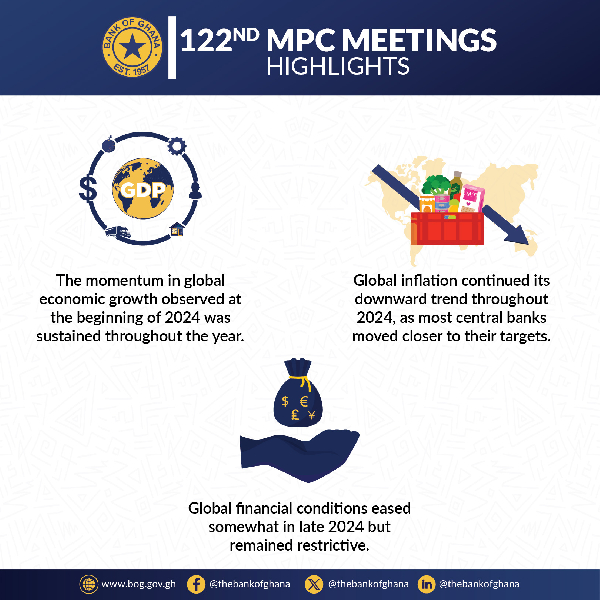The Bank of Ghana (BoG) has maintained the monetary policy rate at 27 percent following its first Monetary Policy Committee (MPC) meeting of 2025.
The Central Bank held its first press conference of the year on January 25, 2025, where it provided an update on key economic indicators, including inflation, GDP growth, and the performance of the local currency.
The decision to keep the policy rate unchanged reflects the Bank's assessment of domestic and global economic conditions, particularly efforts to tame inflation, stabilize the cedi, and support economic growth.
During the press briefing, BoG Governor Dr. Ernest Addison noted that while inflationary pressures have eased, the Bank remains cautious due to global economic uncertainties, fluctuating commodity prices, and domestic fiscal constraints.
The policy stance aims to ensure price stability while supporting economic recovery, especially as Ghana navigates ongoing debt restructuring efforts and implements fiscal consolidation measures under its IMF-supported program.
The next MPC meeting is scheduled for March 2025, where the Bank will reassess economic conditions and determine whether further adjustments to the policy rate are necessary.
Here are some key highlights to note
1. The momentum in global economic growth observed at the beginning of 2024 was sustained throughout the year.
The January 2025 World Economic Outlook (WEO) report indicates an upward
revision in growth from 3.2 percent in the October 2024 WEO to 3.3 percent. The better-than-expected global growth outturn in 2024 was primarily due to strong growth in the U.S, a pickup of economic activity in China, and stability in Emerging Market Economies, which together offset weaker growth in the Euro Area.
2. Global inflation continued its downward trend throughout 2024, as most central banks moved closer to their targets.
The ease in inflationary pressures was largely supported by subdued crude oil
prices and the gains from tighter monetary policy stances adopted earlier.
However, there are signs of underlying inflationary pressures in the services sector and the tight labour market conditions.
3. Global financial conditions eased somewhat in late 2024 but remained restrictive.
Policy rates globally have remained restrictive due to slower-than-expected disinflation in some regions, surging long-term bond yields in advanced economies, and increasing uncertainty surrounding changes to U.S. trade and immigration policies.
For Emerging Market and Developing Economies, the tight monetary policy stance in Advanced Economies and rising uncertainty related to policy shifts by the new US administration have weighed on equity prices and led to volatile investor sentiments.
4. On the domestic front, economic activity was stronger with higher-than-projected growth in the first three quarters of 2024.
The latest data from the Ghana Statistical Service showed that real
GDP expanded at an annual rate of 6.3 percent during the first three quarters of 2024, relative to 2.6 percent during the corresponding period in 2023. Non-oil GDP grew by 6.2 percent from 3.3 percent over the same comparative period
5. The latest confidence surveys conducted in December 2024 showed an improvement in both consumer and business confidence.
Consumer confidence improved largely on account of optimism about future economic conditions. Business confidence also picked up as firms met their short-term targets and expressed positive sentiments about company and industry prospects in line with improving macroeconomic conditions.
6. Price developments in 2024 indicated a slowdown in the disinflation process resulting mainly from food price pressures.
At the beginning of the year, inflation rose from 23.2 percent in
December 2023 to 25.8 percent in March 2024. Thereafter, it declined steadily to 20.4 percent in August but has since risen to 23.8 percent in December 2024, primarily due to food price increases.
7. Private sector credit growth continued to increase towards pre-2022 macroeconomic levels, albeit slowly.
Nominal growth in the private sector credit increased to 26.3 percent in December 2024 from 10.7 percent recorded in the corresponding period of 2023.
In real terms, credit to the private sector increased by 2.0 percent relative to a 10.2 percent contraction recorded over the same comparative period in the previous year.
8. The banking sector continues to be profitable, well-capitalized and liquid.
9. Money market rates broadly trended downwards.
10. The Ghana Stock Exchange recorded a strong performance in 2024.
11. International reserves build-up was faster than programmed in 2024.
12. The cedi came under intermittent pressures during the first three quarters of the year but regained some value in the last quarter of the year.
13. Policy rate (MPR) maintained at 27%.




SSD/MA